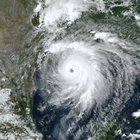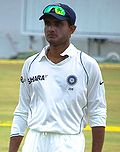From today's featured article Life restoration of the Réunion ibis The Réunion ibis (Threskiornis solitarius) is an extinct bird formerly endemic to the Indian Ocean island of Réunion. Subfossil remains were found in 1974, and it was formally described in 1987. Early travellers described a white bird on Réunion that flew with difficulty, later assumed to refer to a white relative of the dodo. The ibis subfossil suggested that the tales referred to this bird instead. The ibis was mainly white, although its wing tips and plume feathers on its rear were black. The neck and legs were long, and the beak was relatively straight and short for an ibis. Similar to its extant relatives but more robust, it was about 65 cm (25 in) long. Subfossil wing-bones indicate that it had reduced flight capabilities. The diet of the ibis was invertebrates foraged from the soil. In the 17th century it lived only in mountainous areas, perhaps due to predation by introduced animals and hunting by humans for its tasty meat. These factors had driven the ibis to extinction by the early 18th century. (Full article...)
Recently featured:
Did you know ...
|
In the news
On this day
|
From today's featured list
Fifty centuries were scored by cricketers in the ICC Champions Trophy, a One Day International (ODI) tournament organised by the International Cricket Council (ICC) from 1998 to 2017. India led the list, with ten centuries, followed by Sri Lanka, with seven. Alistair Campbell of Zimbabwe was the first to score a century in the tournament, when he made 100 against New Zealand during the inaugural edition. Four players – India's Sourav Ganguly (pictured), South Africa's Herschelle Gibbs, the West Indies' Chris Gayle and India's Shikhar Dhawan – held the record for the most number of centuries, with three each. A further four players – Pakistan's Saeed Anwar, England's Marcus Trescothick, Sri Lanka's Upul Tharanga and Australia's Shane Watson – each scored two centuries. Gayle's three centuries in 2006 was a record for any player in a single edition. The 145 by New Zealand's Nathan Astle against the United States was the highest individual score. (Full list...)
Today's featured picture

|
Bloody Saturday is a black-and-white photograph taken on 28 August 1937, a few minutes after a Japanese air attack struck civilians during the Battle of Shanghai in the Second Sino-Japanese War. It depicts a baby named Ping Mei, one of the few survivors of the attack, crying amid the bombed-out wreckage of Shanghai South railway station; the baby's mother lay dead nearby. The photographer, H. S. "Newsreel" Wong, owned a camera shop in Shanghai and provided photographs and films for various newspapers and agencies. Within a year of its publication, the photograph had been seen by more than 136 million people around the world, and became a cultural icon demonstrating Japanese wartime atrocities in China. Photograph credit: H. S. Wong; restored by Yann Forget
Recently featured:
|
Other areas of Wikipedia
- Community portal – Bulletin board, projects, resources and activities covering a wide range of Wikipedia areas.
- Help desk – Ask questions about using Wikipedia.
- Local embassy – For Wikipedia-related communication in languages other than English.
- Reference desk – Serving as virtual librarians, Wikipedia volunteers tackle your questions on a wide range of subjects.
- Site news – Announcements, updates, articles and press releases on Wikipedia and the Wikimedia Foundation.
- Village pump – For discussions about Wikipedia itself, including areas for technical issues and policies.
Wikipedia's sister projects
Wikipedia is hosted by the Wikimedia Foundation, a non-profit organization that also hosts a range of other projects:
Free media repository
Wiki software development
Wikimedia project coordination
Free textbooks and manuals
Free knowledge base
Free-content news
Collection of quotations
Free-content library
Directory of species
Free learning resources
Free travel guide
Dictionary and thesaurus



